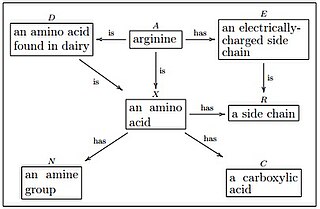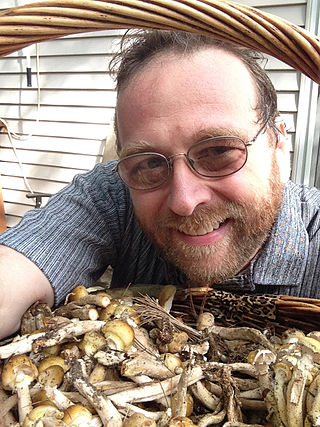
Category theory is a general theory of mathematical structures and their relations that was introduced by Samuel Eilenberg and Saunders Mac Lane in the middle of the 20th century in their foundational work on algebraic topology. Category theory is used in almost all areas of mathematics. In particular, many constructions of new mathematical objects from previous ones that appear similarly in several contexts are conveniently expressed and unified in terms of categories. Examples include quotient spaces, direct products, completion, and duality.

Stephen Smale is an American mathematician, known for his research in topology, dynamical systems and mathematical economics. He was awarded the Fields Medal in 1966 and spent more than three decades on the mathematics faculty of the University of California, Berkeley, where he currently is Professor Emeritus, with research interests in algorithms, numerical analysis and global analysis.
Noncommutative geometry (NCG) is a branch of mathematics concerned with a geometric approach to noncommutative algebras, and with the construction of spaces that are locally presented by noncommutative algebras of functions, possibly in some generalized sense. A noncommutative algebra is an associative algebra in which the multiplication is not commutative, that is, for which does not always equal ; or more generally an algebraic structure in which one of the principal binary operations is not commutative; one also allows additional structures, e.g. topology or norm, to be possibly carried by the noncommutative algebra of functions.

Michael David Spivak was an American mathematician specializing in differential geometry, an expositor of mathematics, and the founder of Publish-or-Perish Press. Spivak was the author of the five-volume A Comprehensive Introduction to Differential Geometry, which won the Leroy P. Steele Prize for expository writing in 1985.
In programming language theory, semantics is the rigorous mathematical study of the meaning of programming languages. Semantics assigns computational meaning to valid strings in a programming language syntax. It is closely related to, and often crosses over with, the semantics of mathematical proofs.
In mathematics, a bicategory is a concept in category theory used to extend the notion of category to handle the cases where the composition of morphisms is not (strictly) associative, but only associative up to an isomorphism. The notion was introduced in 1967 by Jean Bénabou.
Categorical logic is the branch of mathematics in which tools and concepts from category theory are applied to the study of mathematical logic. It is also notable for its connections to theoretical computer science. In broad terms, categorical logic represents both syntax and semantics by a category, and an interpretation by a functor. The categorical framework provides a rich conceptual background for logical and type-theoretic constructions. The subject has been recognisable in these terms since around 1970.

Markus J. Buehler is an American materials scientist and engineer at the Massachusetts Institute of Technology (MIT), where he holds the endowed McAfee Professorship of Engineering chair. He is a member of the faculty at MIT's Department of Civil and Environmental Engineering, where he directs the Laboratory for Atomistic and Molecular Mechanics (LAMM), and also a member of MIT's Center for Computational Science and Engineering (CCSE) in the Schwarzman College of Computing. His scholarship spans science to art, and he is also a composer of experimental, classical and electronic music, with an interest in sonification. He has given several TED talks about his work.

Bertram Kostant was an American mathematician who worked in representation theory, differential geometry, and mathematical physics.
Categorical set theory is any one of several versions of set theory developed from or treated in the context of mathematical category theory.

In mathematics, the category Rel has the class of sets as objects and binary relations as morphisms.

Dennis Parnell Sullivan is an American mathematician known for his work in algebraic topology, geometric topology, and dynamical systems. He holds the Albert Einstein Chair at the Graduate Center of the City University of New York and is a distinguished professor at Stony Brook University.

Yu-Chi "Larry" Ho is a Chinese-American mathematician, control theorist, and a professor at the School of Engineering and Applied Sciences, Harvard University.
In mathematics, especially (higher) category theory, higher-dimensional algebra is the study of categorified structures. It has applications in nonabelian algebraic topology, and generalizes abstract algebra.
Categorical quantum mechanics is the study of quantum foundations and quantum information using paradigms from mathematics and computer science, notably monoidal category theory. The primitive objects of study are physical processes, and the different ways that these can be composed. It was pioneered in 2004 by Samson Abramsky and Bob Coecke. Categorical quantum mechanics is entry 18M40 in MSC2020.

The theory of ologs is an attempt to provide a rigorous mathematical framework for knowledge representation, construction of scientific models and data storage using category theory, linguistic and graphical tools. Ologs were introduced in 2012 by David Spivak and Robert Kent.

Stuart Alan Geman is an American mathematician, known for influential contributions to computer vision, statistics, probability theory, machine learning, and the neurosciences. He and his brother, Donald Geman, are well known for proposing the Gibbs sampler, and for the first proof of convergence of the simulated annealing algorithm.

Pavel Ilyich Etingof is an American mathematician of Russian-Ukrainian origin. He does research on the intersection of mathematical physics and representation theory, e.g., quantum groups.
Applied category theory is an academic discipline in which methods from category theory are used to study other fields including but not limited to computer science, physics, natural language processing, control theory, probability theory and causality. The application of category theory in these domains can take different forms. In some cases the formalization of the domain into the language of category theory is the goal, the idea here being that this would elucidate the important structure and properties of the domain. In other cases the formalization is used to leverage the power of abstraction in order to prove new results about the field.
In mathematics, nonabelian algebraic topology studies an aspect of algebraic topology that involves higher-dimensional algebras.











